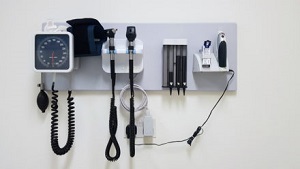The Connecticut Supreme Court restricts the plaintiff’s ability to rely on the “Malfunction Doctrine” to support a Product Liability claim
 A recent decision handed down by the Connecticut Supreme Court may significantly impact the way product liability lawsuits are litigated within the state of Connecticut in the future. In a products liability case, the “malfunction doctrine” permits the plaintiff to argue at trial that a product possessed a defect without offering direct evidence of a defect, but rather only circumstantial evidence of the alleged defect. Under the malfunction doctrine a plaintiff is permitted to argue that a product was defective due to an unexpected event that would not have occurred if the product functioned properly without the necessity of specifying the part or component that was actually defective. A common use of the malfunctions doctrine is in product liability cases arising out of a fire. In a fire case, a plaintiff will typically argue that all causes for the fire have been ruled out except for a malfunction within the product despite no direct evidence of a specific defect.
A recent decision handed down by the Connecticut Supreme Court may significantly impact the way product liability lawsuits are litigated within the state of Connecticut in the future. In a products liability case, the “malfunction doctrine” permits the plaintiff to argue at trial that a product possessed a defect without offering direct evidence of a defect, but rather only circumstantial evidence of the alleged defect. Under the malfunction doctrine a plaintiff is permitted to argue that a product was defective due to an unexpected event that would not have occurred if the product functioned properly without the necessity of specifying the part or component that was actually defective. A common use of the malfunctions doctrine is in product liability cases arising out of a fire. In a fire case, a plaintiff will typically argue that all causes for the fire have been ruled out except for a malfunction within the product despite no direct evidence of a specific defect.
However, in the recently decided of Roland Todd White V. Mazda Motor Of America, Inc., et al.,(Decided: September 23, 2014), the Connecticut Supreme Court upheld trial court and appellate court decisions that required plaintiffs to specifically plead the malfunction doctrine in its complaint. The pleading requirement was held necessary by the Court to put a defendant on sufficient notice of that a malfunction theory of liability would be pursued in a defect product case.
In , White, the Plaintiff, Mr. Roland White, bought a product liability action against a dealership and car manufacturer, Mazda Motor of America Inc. He alleged his new Mazda automobile was defective and unreasonably dangerous after the car caught fire. He further alledged that as a result of the fire in his new car, he sustained various personal injuries. According to the plaintiff, his Mazda caught fire resulting in a small explosion. At the time of the fire, the vehicle only had 3000 miles on its odometer. The plaintiff initially alleged that the car’s fuel lines were improperly installed, specifically that they lacked the proper clamps. He claimed that the improper installation of the fuel lines, lead to a fuel leak and the subsequent fire.
The plaintiff offered the expert testimony of certified fire investigator Richard B. Morris. Plaintiff’s fire investigator testified that the fire appeared to be the result of gasoline leaking on a hot surface due to a mechanical failure. While the expert believed the fuel lines played a role in the cause of the fire, he did not offer an opinion that the vehicle was defective. He conceded that he was not an expert in the field of fuel line manufacturing or vehicle design.
The defendants moved for summary judgment arguing the plaintiff’s expert did not opine that a defect within the vehicle was the cause of the fire, and therefore, plaintiff lacked sufficient evidence to support his strict liability product defect claim. The trial court judge agreed and granted summary judgment in favor of the defendants.
The plaintiff appealed and argued that he had submitted sufficient circumstantial evidence to allow a “malfunction theory” to be presented to a jury.
On appeal, the defendants countered that the plaintiff had failed to timely raise a malfunction claim in the plaintiff’s pleadings and the plaintiff had not properly put them on notice of that claim.
The Appellate Court and Connecticut Supreme Court upheld the trial court’s grant of summary judgment to the defendants. The Connecticut Supreme Court, in a 5-2 decision, held that the plaintiff failed to offer evidence the vehicle was defectively designed or manufactured.
The Connecticut Supreme Court also held that the plaintiff did not timely assert a “malfunction theory.” It held, “the plaintiff did not address the basic elements of a malfunction theory claim in his pleadings … As a result, nothing in the plaintiff’s complaint provided the defendants with notice that they needed to gather facts during discovery to defend against this theory of liability.”
The Supreme Court provided guidance that a complaint must plead: (1) some unspecified defect caused the plaintiff’s harm; (2) the type of incident does not normally occur without a product defect; and, (3) the incident was not caused by some other cause which is not attributable to the manufacturer or seller. The reasoning behind requiring a plaintiff to specifically plead this theory of liability is to provide a defendant with a fair opportunity to conduct discovery on that claim.
Naturally, if a defendant has notice that plaintiff will be proceeding on a “malfunction theory”it can successfully defend the claim by showing that plaintiff failed to effectively rule out other plausible causes for the accident or fire.
This blog post was published originally on October 1, 2014.


 By
By




